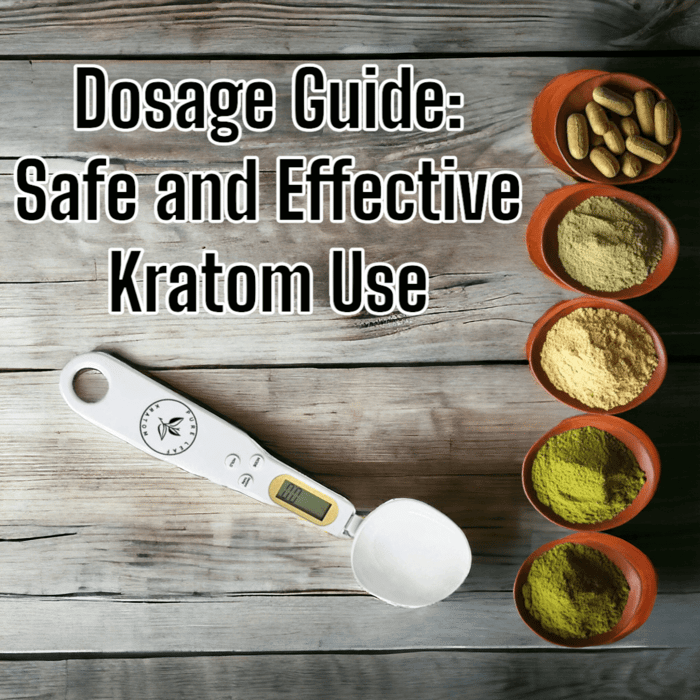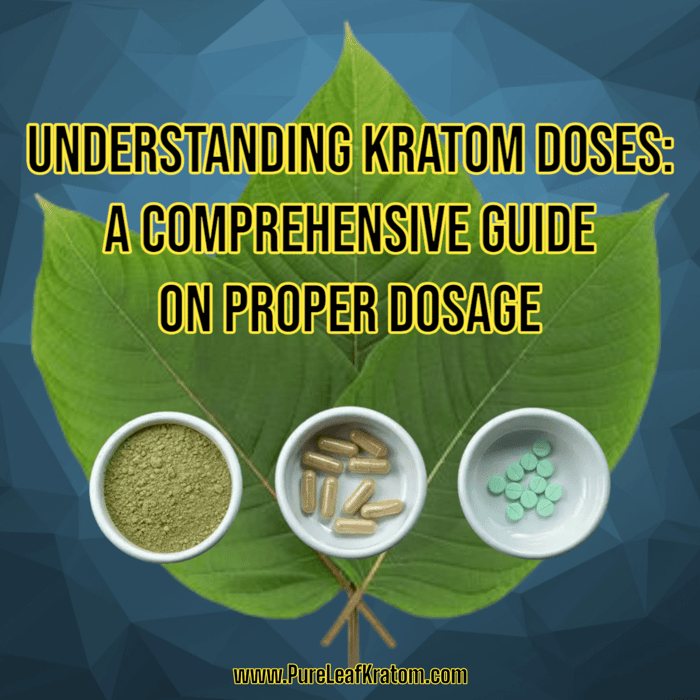
How Much Kratom to Take: A Comprehensive Guide on Kratom Dosage
Unveiling the Mysterious World of Kratom
Explore the historical roots of Kratom, a tropical tree indigenous to Southeast Asia. Traditionally utilized to enhance productivity and combat fatigue, its leaves yield Kratom, with dosage playing a crucial role in its use.
Recent years have seen this age-old remedy gain global recognition. In the United States alone, millions of people are now turning to Kratom for various reasons. Some regard it as a potent pain reliever while others value its potential to alleviate symptoms of opioid withdrawal. A significant number also utilize it as a mood enhancer, energy booster, and anxiety reducer.
The Dual Nature of Kratom
The effects of Kratom are a complex topic as they straddle the boundary between beneficial and potentially harmful. At a low dose, users commonly report feeling a boost of energy, a sharpening of focus, and feelings of euphoria. Enhanced sociability is also an effect often associated with the herb.
Take a moderate to high dose, and the effects transition from being stimulant to sedative. Many users describe feelings of tranquillity and a notable reduction in pain. However, as the dosage increases, so does the risk of negative side effects such as nausea, itching, and potential dependency. It must be stressed that while lifegiving, Kratom also harbors the potential for life-threatening overdose, especially when combined with other drugs.
[dib_prod_145]
Understanding the Colors of Kratom
In the Kratom world, color makes a difference. The leaf veins - coming in red, white, and green - are a good indicator of the potential effects of each strain. The color is believed to reflect the concentration of active elements within the leaf, but studies into these correlations are ongoing.
Red vein strains are typically associated with pain relief and relaxation. White vein strains, on the other hand, are reputed as being energizing and mood-enhancing. Green vein Kratom is often considered a balance between the two, offering mild stimulation alongside pain relief.
Despite the complexity of Kratom's effects, millions are increasingly exploring this natural option for a range of physical and psychological conditions. As such, understanding the dosages associated with various outcomes becomes paramount. The adventure that is Kratom begins here; in the heart of knowledge and the pursuit of responsible use.
How to Start: Threshold and Beginners Dosage
When it comes to Kratom dosage, adopting the 'less is more' principle is highly recommended. Starting with a smaller dose has several advantages and is crucial for first-time users. Yet, one of the key factors to remember is that the optimal Kratom dose is highly individual and usually depends upon factors such as user body weight, age, and tolerance.
The 'Less is More' Principle
Understanding and implementing the notion of 'less is more' is vital when starting on your Kratom journey. A lower dose can often produce a more desirable and maximal effect - a phenomenon unique to this plant. The benefits of a smaller or low dose are numerous – fewer side effects, lower risk of developing a tolerance, and less likelihood of dependency and withdrawal symptoms. It is important to note that the units of measurements for dosages are typically grams and Kratom can be consumed either in powder form or as capsules.
Dosages for Beginners
For first-time users, a beginner dose is a critical starting point. Experts recommend that first-time users start with a low dose; typically around 2 grams. This is often referred to as the threshold dose - the smallest dose at which you begin to notice some effects. By starting with a low dose, you allow your body to adjust to the effects of Kratom gradually. Furthermore, this approach allows you to observe how your body responds to Kratom.
Following the first-time experience, you can adjust the dosage based on the effects you experience. However, caution is a must. This could mean increasing the dosage in small increments while monitoring your body's reactions. Taking note of how different doses affect you can help determine your sweet spot - the dose at which you achieve the desired effects.
While it's not uncommon for some users with high tolerance to utilize up to 8 grams, it's essential to remember that the goal is to find the minimal dose that provides the desired effects. This effectively reduces the risk of unwanted side effects and Kratom dependence. As a rule of thumb, careful self-monitoring is necessary to avoid complications.
[dib_prod_9417]
Dosage Categories Based on Effects: Low, Moderate, High
Understanding the effects of Kratom at different dosage levels can greatly assist in responsible use. In every journey with Kratom, it is vital to recognize that effects can vary substantially between individuals and can be influenced by tolerance levels, previous experience, and individual body chemistry.
Low Dose Effects
A low dose of Kratom, typically 1-2 grams, is usually the starting point for beginners. At this dosage, users might experience mild stimulation that enhances mood and increases energy. It can initiate a feeling of alertness, sociability, and focus. This dose can also help decrease the physical discomfort associated with chronic pain. However, these effects can vary among users, particularly those with a more significant tolerance.
Moderate Dose Effects
As a moderate dose ranges between 2-5 grams, the effects become more pronounced. Participants often notice an increase in pain relief and relaxation. Some users experience an uplift in mood and a euphoric sensation. At this point, the cognitive effects may shift from focus and alertness to a dreamy and contemplative state. Again, the impact can vary, and some individuals may find this dose too strong if they are new to Kratom.
High Dose Effects
An elevated dose, usually 5-15 grams, can induce pronounced sedation and comparator feelings of opioid-like effects. These involve significant pain relief, a feeling of calm, and potentially overwhelming euphoria. High dose usage might also lead to side effects such as nausea, itchiness, or constipation. Users should approach these doses with caution, as higher doses are associated with increased risks, such as developing a reliance or experiencing unpleasant side effects.
Comparison: First-Time Users and Regular Users
Previous exposure to Kratom can significantly influence the effects that the substance has on an individual. First-time users might find that small quantities result in profound changes, while regular users might need to increase their dose due to tolerance development.
Tolerance to Kratom can build gradually over days or weeks of regular use. This means that a user may require larger dosages to achieve the same effects they used to get from lower dosages. A patient's dose might increase over time from a beginner's dose to a moderate dose and finally to a high dose. It is important to manage tolerance by maintaining a fixed dosing schedule, incorporating breaks, and avoiding daily use to minimize the chances of growing dependence.
Potential Adverse Side Effects and Responsible Usage
Responsible and controlled use of Kratom is the key to maximize its benefits and minimize undesired side effects. However, it's important to understand that undesirable effects can manifest and often become pronounced with higher doses.
The Link Between Increased Side Effects and High Doses
The relationship between the Kratom dosage and side effects is direct - the adverse reactions usually amplify with an increase in dose amount. These effects may encompass nausea, constipation, drowsiness, agitation, or other discomforts. Experienced users have often highlighted cases of itchiness or unsettling euphoria at high doses. Regular users might also note a dependency developing over time, leading to withdrawal symptoms if one abruptly discontinues usage.
Importance of Maintaining a Dosing Schedule
Responsible consumption isn't just about the size of the dose; managing when and how often you take Kratom is also crucial. By keeping track of your usage, you can observe the changes Kratom brings about in your body and evaluate the effectiveness of individual doses. A regular schedule can prevent inadvertent increases in dosage, reducing the chances of side effects and dependence. Remember, the guide to Kratom usage advises the principle of 'less is more,' and suggests applying this rule not just to individual doses, but also to the frequency of intake.
The Necessity of Tapering Over Time
Sometimes, the requirement to decrease the dosage may emerge, especially when users develop a tolerance or detailed observation reveals unwanted side effects. Tapering the dose gradually rather than abruptly stopping can make this process easier. The rate of decreasing the dose should be carefully managed to prevent the onset of withdrawal symptoms. For instance, reducing the dose by a small fraction (around 0.5 grams) every few days might make the transition smoother. If needed, consider seeking professional help with this process from resources like the SAMHSA's National Helpline. There's also emerging research about the use of buprenorphine/naloxone treatment for managing Kratom withdrawal and dependence, supporting the idea of medically supervised tapering.
Remember, responsible Kratom use doesn't just refer to today or tomorrow's dose. It's about ensuring sustainable, healthy usage patterns that respect your body's response, capabilities, and limitations. By doing this, you're helping to shape a beneficial relationship with Kratom, one that optimizes its therapeutic potential.
[dib_prod_4211]
The Dangers of Overdosing and Drug Interactions
The effective use of Kratom is largely dependent on responsible consumption and awareness of individual tolerance. However, situations may arise where one takes excessively high doses unknowingly, leading to an overdose. It's also important to note the serious consequences of combining Kratom with other drugs.
Risks of Overdosing on Kratom
A Kratom overdose can lead to severe physical and mental symptoms that mimic opioid overdose. It’s critical to remain aware of Kratom's serious adverse effects when taken in high doses (15+ grams) including, impaired cognition, severe nausea, rapid heartbeat, hallucinations, seizures, and potential loss of consciousness.
In case of a suspected overdose, it's important to seek immediate professional medical help. A poison control center or emergency medical services can provide prompt and appropriate care to manage the condition and prevent further complications.
Potential Dangers of Combining Kratom and Other Drugs
Research suggests that combining Kratom with other drugs, such as prescription medications, recreational drugs, or alcohol, can lead to severe side effects, including potential fatalities. This is because combining drugs can induce complex interactions that exacerbate the inherent risks of each substance.
Interactions with Prescription Medications
Combining Kratom with certain prescription medications can worsen existing health conditions, alter the intended action of the medications, and potentially lead to unexpected and serious side effects. If you’re on any prescription medication, it's highly recommended to consult a healthcare professional before using Kratom. This could prevent potential drug interactions that could pose considerable risks.
Interactions with Alcohol and Recreational Drugs
Mixing Kratom with alcohol and recreational drugs increases the risk of serious physical and psychological effects. Both alcohol and many recreational drugs depress the central nervous system, just like higher doses of Kratom. Mixing these substances can compound the depressant effects, leading to slowed breathing or unconsciousness, and in extreme cases, it could also be fatal.
To avoid these severe complications, responsible use of Kratom and a thorough understanding of potential drug interactions is crucial.
Recommending a Daily Limit and Utilizing Kratom for Pain Relief
While the appropriate dosage of Kratom varies significantly based on several factors, maintaining a daily limit is crucial to prevent tolerance, dependence, and potential side effects. For those ingesting Kratom as a natural remedy for pain or to prevent nausea, a particular selection of strains and dosages might be more effective.
Suggested Daily Limit for Kratom
For occasional consumption, a dose of 1-2 grams might suffice, but regular users might need a bit more. Concentration on learning your body's reaction and usage needs without compromising safety is critical. Hence, keeping daily intake below 5 grams is a sound recommendation to enjoy the benefits of Kratom while minimizing the potential negative impacts. Steadfast adhering to the 'less is more' approach can significantly enhance the benefits of Kratom without building a high tolerance or dependence.
Using Kratom for Pain Relief and Nausea Prevention
One of the reasons behind Kratom's burgeoning popularity is its potency in alleviating pain and preventing nausea. The best strains for these purposes could be the red vein and green vein Kratom, known for their analgesic and balanced effects, respectively. Suggested dosages can range from 2-5 grams for moderate pain relief to a higher dose if necessary, considering the risk of potential side effects. The experience level of the user and tolerance also impact the right amount.
While this guide provides suggestions, it's crucial to remember that each individual’s reaction to Kratom can be unique. Always begin with a low dosage and gradually find your comfort zone. Consultation with a health professional is advisable, especially if you are a first-time user or plan to use Kratom alongside other medications.




